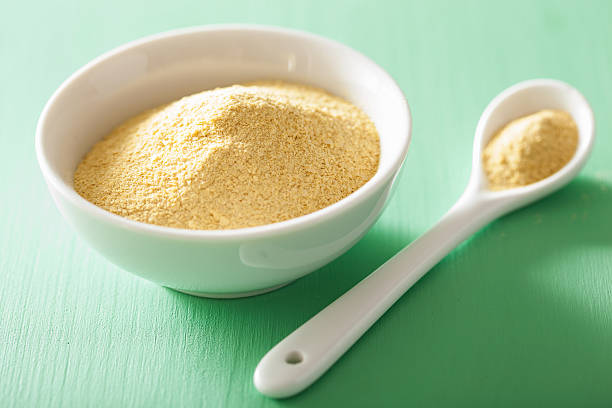The Complete Guide To Nutritional Yeast Deutsch: Everything You’ve Wanted to Know
You’ve probably noticed the rise in popularity of nutritional yeast in recent years. From adding a salty punch to your favorite foods, to making a simple snack, and even as an ingredient in some beauty products – it seems like everyone has been talking about this little yellow, flaky fungus lately. What Is Nutritional Yeast? Nutritional yeast is a type of microorganism that grows as a granule inside certain types as well as many different edible plants. The most common type is grown on molasses or salt with the honey dew left on top for them to grow in the perfect environment for their growth. Once they are grown, they are dried, packaged, and sold as nutritional flakes. How Do You Use It? You can find nutritional yeast in various forms. It comes packaged pre-flaked or flaked, raw or roasted (and therefore more flavorful), and dry or liquid depending on the manufacturer and how they package it. In this article we will cover everything you ever wanted to know about this amazing little yellow fungus!
What Is Nutritional Yeast?
Nutritional yeast is a type of yeast that is grown in a salt or sugar solution. The yeast is then harvested and dried, resulting in flakes of yellow powder. Nutritional yeast is most often used as a vegan substitute for cheese. The yeast contains protein and a number of beneficial vitamins, including B12 and Selenium, which are typically lacking in plant-based diets. A few commonly used names include: nutritional yeast, non-dairy yogurt, or soy yogurt. Nutritional yeast is different than the other names because it is not made from soy or dairy.
How to Use Nutritional Yeast for Cooking and Baking
– Baking: You can use nutritional yeast as a replacement for salt, baking soda, and yeast. When using it as a substitute for salt, increase the amount of other ingredients such as liquids or herbs to account for the lack of salt, so the recipe isn’t missing an essential component. Baking requires salt to create a chemical reaction that causes bread to rise. If you are vegan or vegetarian, you will want to use salt in your recipes. This results in a more appealing texture and more volume in the loaf of bread. If you aren’t adding salt when you bake with nutrition yeast, you will end up with a flatter loaf of bread. – Cooking: You can add nutritional yeast to sauces, stews, soups, beans, vegetables, and pasta dishes to add a cheese-like taste and texture. One way to use it is to add one tablespoon of flake to a cup of water and mix it with a few tablespoons of cornstarch and water. This can be used to add a cheese-like texture to a sauce or soup. You can also add nutritional yeast to roasted vegetables or beans to create a cheesy flavor and texture.
Read More: Nutrition Calculator: The Ultimate Tool to Make Your Dieting Experience Easier
6 Benefits of including nutritional yeast in your diet
– Antioxidants – Probiotics – Stronger immune system – Stronger bones – Stronger muscles – Better sleep – Better digestion
3 Reasons You Shouldn’t Eat Nutritional Yeast
– It’s not a good source of protein – It’s not a good source of calcium – It’s not a good source of iron
How to Deactivate and Use Active Dry Yeast in Your Diet
Active dry yeast (ADY) is a type of nutritional yeast that is grown on a selective medium and is then harvested, packaged, and sold. ADY contains a gene that allows yeast cells to produce the amino acid histidine, which is usually lacking in vegan diets. This allows vegans to get the protein they are usually lacking by consuming the yeast. This type of nutrition yeast is grown in a yeast medium, which is the same medium used for bread production. It contains ingredients such as niacin, iron, calcium, and amino acids, which are required for the yeast cells to survive and grow. ADY has several advantages over flaked nutritional yeast. First, it has a stronger cheese-like flavor and is less expensive than flaked yeast. Second, it can be used as a replacement for soy-based tofu in some recipes, which can be difficult to create without soy. Finally, it can be used in the same way as brewer’s yeast to produce alcohol.
2 Things You Should Know About Flaked Yeast Before Using It. Here’s Why.
– It doesn’t grow in salt. – It’s not as strong as brewer’s yeast.
1 Tip: Proper yeast handling and preparation is key to activating and using your yeast effectively.
– Always use active dry yeast. – Always include a yeast or probiotic in your recipe. – Always use the right amount of yeast.
1 Last Tip: If you’re not sure which type of yeast to use, use flaked nutritional yeast. It’s the most commonly available form, and the easiest to use.
You can check the nutritional to make sure it’s active dry yeast. Active dry yeast is grown in a starter culture medium and has a cloudy appearance that resembles yogurt. It is also less pungent than flaked yeast. A cloudy appearance means it is active dry yeast and not flaked yeast, which is grown in a yeast medium. If the yeast looks like yogurt and smells like cheese, it is active dry yeast.
Final Thoughts
You’ve probably noticed the rise in popularity of nutrition yeast in recent years. From adding a salty punch to your favorite foods, to making a simple snack, and even as an ingredient in some beauty products – it seems like everyone has been talking about this little yellow, flaky fungus lately.






